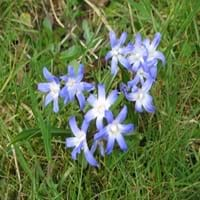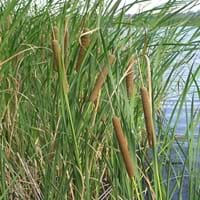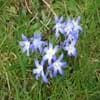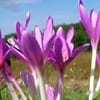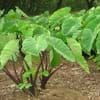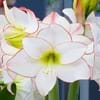Life Span
Perennial
Perennial
Type
Bulb or Corm or Tuber
Aquatics
Origin
Mediterranean, Turkey
North America, United States, Northeastern United States, Mid-Atlantic United States, Southeastern United States, North-Central United States, Central United States, Western United States, California, Canada
Types
Not Available
Not Available
Habitat
meadows, Terrestrial
Bog Garden, Ponds
USDA Hardiness Zone
3-9
3-10
Habit
Clump-Forming
Thicket/Colonizing
Flower Color
White, Blue, Pink, Violet
Light Yellow, Light Green
Flower Color Modifier
Bicolor
Not Available
Fruit Color
Not Available
Brown
Leaf Color in Spring
Green
Green
Leaf Color in Summer
Light Green
Green
Leaf Color in Fall
Several shades of Green
Green
Leaf Color in Winter
Light Green
Not Available
Leaf Shape
Long Linear
Flat, Narrow
Plant Season
Spring, Winter
Summer, Fall
Sunlight
Full Sun, Partial Sun
Full Sun, Partial Sun
Type of Soil
Loam
Loam, Sand
The pH of Soil
Acidic, Neutral, Alkaline
Acidic, Neutral, Alkaline
Soil Drainage
Well drained
Poorly Drained
Bloom Time
Early Spring, Late Winter
Early Summer, Summer
Tolerances
Drought
Wet Site
Where to Plant?
Container, Ground, Pot
Ground
How to Plant?
From bulbs, Seedlings
Divison, Seedlings
Plant Maintenance
Medium
Medium
Watering Requirements
Average Water Needs, Do Not over Water, Do not water frequently, Keep the ground moist but not water-logged, Never Over-water
Needs Very high moisture
In Summer
Lots of watering
Lots of watering
In Spring
Moderate
Moderate
In Winter
Average Water
Average Water
Soil pH
Acidic, Neutral, Alkaline
Acidic, Neutral, Alkaline
Soil Type
Loam
Loam, Sand
Soil Drainage Capacity
Well drained
Poorly Drained
Sun Exposure
Full Sun, Partial Sun
Full Sun, Partial Sun
Pruning
Remove damaged leaves, Remove dead branches, Remove dead leaves
Remove damaged leaves
Fertilizers
All-Purpose Liquid Fertilizer
Nutrient Rich Fertilizer
Pests and Diseases
Red blotch
Free of serious pests and diseases
Plant Tolerance
Drought
Drought
Flower Petal Number
Single
Not Available
Foliage Texture
Fine
Coarse
Foliage Sheen
Matte
Glossy
Attracts
Bees, Flying insects
Wildlife
Allergy
Skin rash
Mild Allergen
Aesthetic Uses
Beautification, Bouquets, Ground Cover, Showy Purposes
Cut Flowers, Wild gardens
Beauty Benefits
Not Available
Not Available
Environmental Uses
Air purification
Air purification
Medicinal Uses
No Medicinal Use
anticoagulant, Diuretic, Haemostatic, Miscellany
Part of Plant Used
Flowers
Flowers, Leaves, Root, Seeds, Stem
Other Uses
Decoration Purposes, Showy Purposes, Used as Ornamental plant
Used as a thickener in soups, Used to make biscuits, Used to produce edible oil, Used to yield a sweet syrup
Used As Indoor Plant
Yes
No
Used As Outdoor Plant
Yes
Yes
Garden Design
Alpine, Container, Foundation, Lawns and Turf, Mixed Border, Rock Garden / Wall, Wildflower
Dried Flower/Everlasting, Wildflower
Botanical Name
CHIONODOXA
TYPHA angustifolia
Common Name
Chionodoxa, Glory-of-the-Snow
Narrowleaf Cattail, Lesser Reedmace
In Hindi
Chionodoxa
Narrowleaf Cattail
In German
Chionodoxa
Schmalblättriger Cattail
In French
Chionodoxa
Narrowleaf Cattail
In Spanish
Chionodoxa
Espadaña de hoja estrecha
In Greek
Chionodoxa
στενόφυλλα Cattail
In Portuguese
Chionodoxa
Narrowleaf Tifa
In Polish
Chionodoxa
Wąskolistne Cattail
In Latin
Chionodoxa
Cattail glaucescens
Phylum
Platyhelminthes
Magnoliophyta
Family
Liliaceae
Typhaceae
Clade
Angiosperms, Monocots
Angiosperms, Commelinids, Monocots
Tribe
Not Available
Not Available
Subfamily
Not Available
Not Available
Number of Species
Not Available
Properties of Chionodoxa and Narrowleaf Cattail
Wondering what are the properties of Chionodoxa and Narrowleaf Cattail? We provide you with everything About Chionodoxa and Narrowleaf Cattail. Chionodoxa doesn't have thorns and Narrowleaf Cattail doesn't have thorns. Also Chionodoxa does not have fragrant flowers. Chionodoxa has allergic reactions like Skin rash and Narrowleaf Cattail has allergic reactions like Skin rash. Compare all the properties and characteristics of these two plants. Find out which of these plant can be used as indoor plant. If you are interested to decorate your house and garden, find out aesthetic uses, compare them and select the plant which will beautify your surrounding. Along with beautification, try comparing medicinal and edible uses of Chionodoxa and Narrowleaf Cattail and you can choose the plant having best and most benefits.
Season and Care of Chionodoxa and Narrowleaf Cattail
Season and care of Chionodoxa and Narrowleaf Cattail is important to know. While considering everything about Chionodoxa and Narrowleaf Cattail Care, growing season is an essential factor. Chionodoxa season is Spring and Winter and Narrowleaf Cattail season is Spring and Winter. The type of soil for Chionodoxa is Loam and for Narrowleaf Cattail is Loam, Sand while the PH of soil for Chionodoxa is Acidic, Neutral, Alkaline and for Narrowleaf Cattail is Acidic, Neutral, Alkaline.
Chionodoxa and Narrowleaf Cattail Physical Information
Chionodoxa and Narrowleaf Cattail physical information is very important for comparison. Chionodoxa height is 10.20 cm and width 5.10 cm whereas Narrowleaf Cattail height is 120.00 cm and width 240.00 cm. The color specification of Chionodoxa and Narrowleaf Cattail are as follows:
Chionodoxa flower color: White, Blue, Pink and Violet
Chionodoxa leaf color: Green
Narrowleaf Cattail flower color: Light Yellow and Light Green
- Narrowleaf Cattail leaf color: Green
Care of Chionodoxa and Narrowleaf Cattail
Care of Chionodoxa and Narrowleaf Cattail include pruning, fertilizers, watering etc. Chionodoxa pruning is done Remove damaged leaves, Remove dead branches and Remove dead leaves and Narrowleaf Cattail pruning is done Remove damaged leaves. In summer Chionodoxa needs Lots of watering and in winter, it needs Average Water. Whereas, in summer Narrowleaf Cattail needs Lots of watering and in winter, it needs Average Water.
